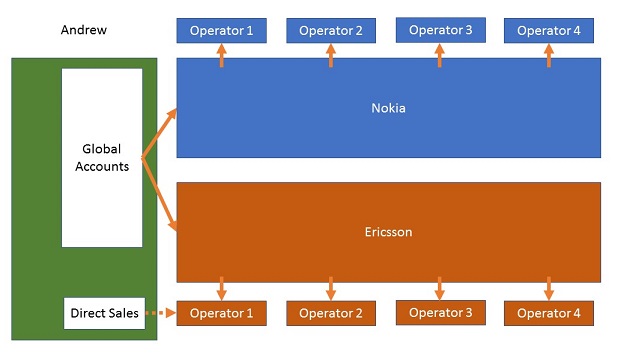Disaggregation – The challenges of a small supplier
Continuing with the same example of microwave antennas, let us examine now why the small suppliers like Andrew became a party to delaying the disaggregation and what business model led to their challenges.
Let us examine their business model using the following picture,

Large vendors like Ericsson or Nokia were:-
- A significant portion of Andrew’s total Revenue
- The Account leads connected with these accounts had spent a lot of time cultivating these accounts
There was no way that Andrew could connect to all the customers directly, many countries/accounts could not justify a dedicated sales team. Change only occurred when a customer was
- large enough,
- adamant on direct connect,
- could pressurize Large Vendor and Andrew both to adopt a new model
You can imagine that part of the pressure would have been created by competitors of Andrew, who
- did not have access to large vendors,
- forged close relationships with operators,
- accepted the responsibilities of interworking and operations
And forced Andrew themselves to restructure and support their internal transformations.
In summary, even if technically and commercially a transformation makes sense, it may get delayed or fail to take off because of the complex ecosystem that we operate in, the three bid hurdles are:-
- Low Investment in relevant teams by the Telecom Operator
- Vested interests of the Large Vendors
- Market structure and resistance to internal transformations at key suppliers
If anyone can overcome challenges and really make the transformations possible, it is the Telecom Operator. Next week we will talk about the segment of our industry which has really shaken the world and is accelerating the disaggregation.
Stay tuned for more.